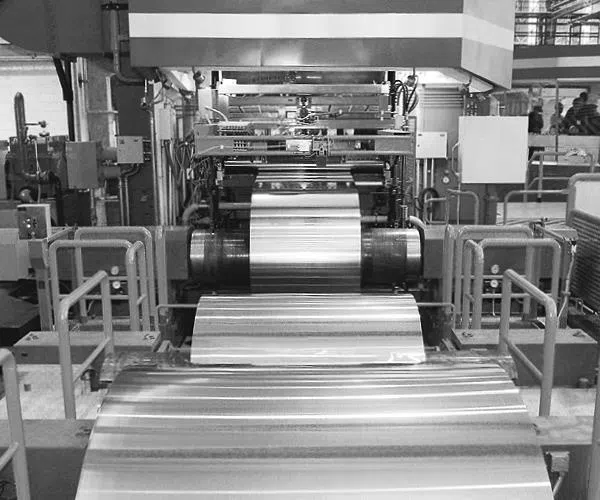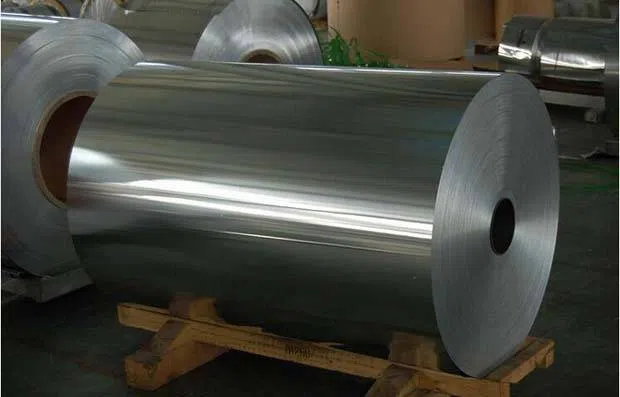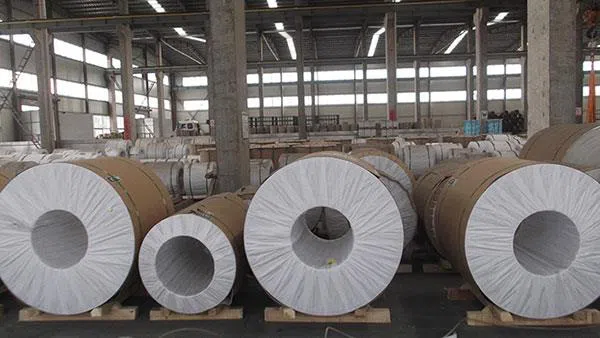One of the goals of rolling modernization program is to focus production on making converting, household and insulation foils. Foil is a high added-value product if manufactured from in-house raw material. The basic challenges that manufacturers wishes to deal with in the proposed project are the mastering new technology, use of continuous cast strip for making high-quality foil and broadening its marketing possibilities with final products of new quality.
At this stage of the new technology implementation and restructuring of the roll casting programmed it was realized that it would be absolutely essential
to develop and master new knowledge in the field of developing cast strip properties (roughness, oxide impurities and such);
to modified chemical composition of alloys for continuous casting and to unified various alloys into a few suitable for continuous casting, without affecting the properties of final products, which is extremely challenging in terms of technology;
to develop the microstructure, phase composition and formability of cast strip as well as final products (firstly 8-10 μm gauge insulating, converter and household foils); and
to continue development of new products/applications from cast strip.
The introduction of continuous casting of thin aluminum strip based on AA 1050 and AA 8011 causes a fundamental change in the microstructure and therefore physical and chemical properties of the material when compared to conventional working of DC or semi-continuous cast slabs.
During water-cooled rolling, due to the increased speed of crystallization, and simultaneous hot rolling in semi-solid state, the solid solution is strongly supersaturated and non-equilibrium intermetallic phases AlmFe and AlxFeySiy are precipitated. The composition, distribution, size, shape and fraction of the microstructural constituents have a crucial effect on the formability of these alloys and the final quality of foil.
The presence of fine-grain equilibrium oxide in the metal at the strip surface, the size and orientation solidification grains and the central segregations all affect grain size and macroporosity. Diffusion processes during crystallization and relaxation processes, i.e. the possibility of dislocation sliding during cold working, are much slower for continuous cast thin strip.
Understanding how the interrelationship between important alloying as well as trace elements (Si, Fe, Mn, Cr, Zn, Ti) in the based aluminum space lattice affects their solubility makes it possible to change and optimize the chemical composition of aluminum alloys 1050 and 8011, achieving in that way the standard and comparable quality of foil stock suitable for further downstream processing.
The project objective was to understand the processes and determine the evolution of microstructure of rapidly solidifying aluminum alloys (1050 and 8011) cast in new caster, in order to enable faster development and implementation of new alloys with the aim of expanding the range of products made from continuous cast thin strip. By knowing the effect of continuous casting process parameters, by optimizing and unifying alloys and understanding thermo mechanical processes we can expect to be able to change sufficiently the microstructure, chemical composition of the existing phases and thereby the technological properties and quality level of foil made from continuous cast strip in such a way as to get a favorable response in the market. The new knowledge gained about the material will furthermore serve as a basis for describing foil properties and their comparison with foil made from hot-rolled strip manufactured from conventional semi- continuously cast slabs.

Strip production on twin roll caster. Activities were divided into four phases, each phase corresponding to one of the casting widths (1050, 1150, 1600 and 1700 mm). Each phase covers: casting parameter definition, developing casting operator ability and autonomy to produce under stable casting conditions, improving cast strip geometry (longitudinal gauge variations over the coil length below +/-2%, longitudinal gauge variations over one roll revolution below +/-1%, cross profile between 0 and 1%, tilting between two edges limited to 1%), and improving cast strip surface quality, taking into account the feedback from the rolling mill regarding the end products (foil production). Casting parameters were defined for various widths, alloys and roll cambers.
Foil production from caster strip. For the whole foil production program (final gauge from 0,006 to 0,100 mm), some representative final thickness and widths were chosen. The suitability of the technological procedures for all foils in the thickness range from 0,006 to 0,100 mm was assessed based on the approval of the technology and process for foil production and on the approval of quality by customers for the chosen representative final thickness and width. Approval of caster strip quality and technology process for foil production was also performed for all chosen widths using alloys AA 1050, AA 1200, AA 8011 and AA 8079.
As-cast microstructure of strips was monitored in the longitudinal and the transverse cross section at the mid-with as well as at the mid- thickness of the coils AA 1200. It has been shown that selected casting parameters result in the production of a cast strip of good quality, with especially: very fine microstructure, typical of strip casting at 6 mm with adequate grain refiner addition, small centerline segregation, similar to that in the cast strip of competitors, no hard phases (that could lead to porosity problems), and no surface segregations.
Fabrication schedules through to the 8-9μm gauge have been developed for the downstream processing of strips of AA 1050, AA 1200, AA 8011, AA 8079 and AA 8006.
Trials with AA 1050 alloy for insulation foil products (final gauge 70μm) had the following main results:
non proper strip surface aspect with longitudinal lines, and
acceptable strip surface aspect, similar to hot rolled material.
It has been identified that the poor surface aspect obtained with the coils of 1st trial was mainly due to a large as-cast grain size as-cast due to the insufficient addition of grain refiner (large feathery grains were observed at the strip mid-thickness).
Trials with AA 1200 and AA 8011 alloys for foil products (final gauge 8 μm). Surface quality of the mat side at the final gauge was the most important parameter to be controlled. A correlation between the surface aspect of the mat side and the grain size of the foil was found. This quality evaluation was also done at 0.6 mm OH after intermediate annealing and the correlation has been found to be the same.

The results obtained could be summarized as follows:
The foil from reference caster material has the finest grain size at the final gauge and after intermediate annealing
Regarding AA 1200 alloy, the foil with Fe/Si ratio 1:1 from the 2nd trial the grain size was small both, at the final gauge and after intermediate annealing (without any large surface grains). The grain size was however, slightly larger than in the foil from reference caster material. The foil with Fe/Si ratio 2:1 from the 2nd trial has larger grains at the final gauge and large surface grains are observed after intermediate annealing. The foil with Fe/Si ratio 2:1 from the 1st trial has numerous large grains both at the final gauge and after intermediate annealing.
In case of AA 8011 alloy, the foil from the 2nd trial has a slightly larger grain size at the final gauge than the foil from the 1st trial. The material from the 2nd trial also has a few large surface grains after intermediate annealing.
It was found that the Fe/Si ratio 1:1 (the same ratio as in the reference caster material) for foils made from AA 1200 alloy is giving better surface quality of the final product. In addition, the increased grain-refining rate was the key of the improved mat side surface aspect in the 2nd and 3rd trials.
Taking into account the foils from AA 8011 alloy, the slightly lower mat side quality of the 2nd and 3rd trials compared to the 1st trial may be due to the higher casting speed. A possible explanation is that casting speed is affecting the solidification front, the segregation regime of the alloying elements, and therefore the distribution of the recrystallization nuclei.
Conclusion
Complete casting parameters form strip production on caster were defined and approved for alloys: AA 1050, AA 1200, AA 8011, AA 8079.
Various strip downstream processing routes for foil stock and foils production were tested on the level of industrial trials.
Based on this, several process modifications were introduced resulting in significant quality improvements of as-cast strip, foil stock and foils.
Insulation, converter and household foils of standard quality in gauge between 8-70μm were produced and foil production technology for these target products was successfully implemented.




QR Code
